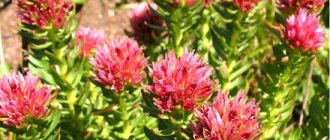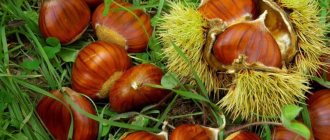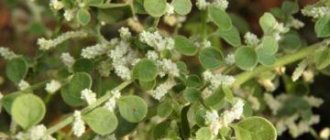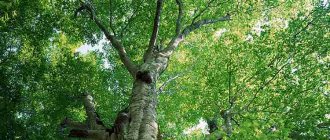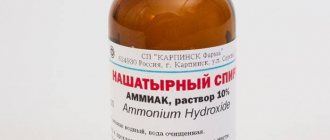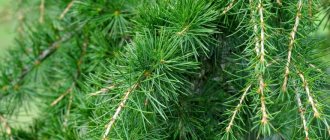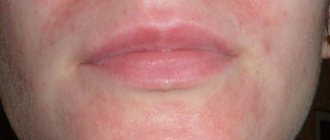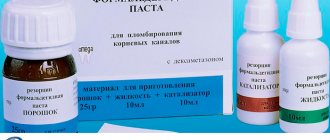Gentian (gorchanka) is a herb whose medicinal properties have been known since the times of Ancient Egypt. It gets its name from the excessively bitter taste of its roots and leaves. The beneficial properties of gentian are recognized by both traditional and folk medicine.
The plant is used not only in our country, but also in China, Mongolia and even Tibet. Let's figure out together what medicinal properties gentian has, and whether it has any contraindications for use.
Plant composition
The bitter taste of the herb is due to the content of a large number of glycosides. The root contains gentiopecrin, amarogentin, amaropanin, amarosverin, svertsiamarin, gentianin.
The composition also includes aromatic compounds, alkaloids, tannins, ascorbic acid, inulin, fatty oil, pectin, sugars, phenolcarboxylic acids.
Doctor from Siberia
There are two types of medicinal plants found in Siberia. Gentian pulmonary reaches a height of up to half a meter, the grass blooms in August, and has been known for its healing properties for several decades. This plant received its name for its unique properties. In its leaves, gentian pulmonale concentrates:
- Vitamin C;
- Glycosides, Alkaloids;
- Essential oils.
- The healing properties of the root are achieved due to the presence in them:
- Carotene, Alkaloids;
- Tannins, Glucosides;
- Erythroceptaurine, Vitamin C.
- Thanks to this combination, gentian pulmonary is used for:
- Normalization of the functioning of the digestive organs;
- Cleansing the intestines from parasites.
Gentian triflorum is found in eastern Siberia. Like gentian pulmonary, this type of medicinal plant is used to improve the functioning of the stomach and digestive organs. Tibetan healers use the flowers to treat fatigue, nervous breakdowns, and depression, and the leaves as an external remedy for treating wounds.
Traditional healers of Western Siberia successfully use the medicinal properties of a flower called gentian cruciform. Infusions and decoctions of this species are popular among herbalists and herbalists. Gentian cruciform is recommended for diseases of the kidneys, bladder, and excretory system.
Medicinal properties of gentian herb and root
- glycosides contained in its composition in large quantities stimulate appetite, have an antispasmodic effect, and also have a positive effect on the functioning of the gastrointestinal tract;
- gentianine helps suppress cramps and cough, has antipyretic properties, has a calming and anti-inflammatory effect;
- phenol carbonic acids improve intestinal motility, as well as the evacuation function of the stomach.
Where can I buy
You can buy gentian root and herb in our online store “Russian Roots”. The selected product will be sent by mail to any region of the country. Delivery of goods by courier service is organized for residents of Moscow and the region. You can also buy gentian root at an affordable price in our network of herbal pharmacies located in Moscow. Send us your feedback on the products you purchased!
Attention! All materials published on our website are protected by copyright. When re-publishing, attribution and a link to the original source are required.
Use in folk medicine
Healers have used bitterweed for hundreds, perhaps thousands, of years. In Ancient Egypt, it was used to treat stomach diseases; in Ancient Rome, it was used to treat severe bruises, convulsions, and even the plague. The plant was used as an antidote for bites from poisonous animals. In the Middle Ages, the medicinal properties of bitterweed were used against tuberculosis, plague, diarrhea and fever. It was also used as an anthelmintic. In the Carpathians, the plant was used to treat diseases of the gallbladder, liver, stomach, and lungs. It has been used for various sexual disorders.
In folk medicine, the plant, like Ginkgo biloba, is used as a general tonic. Decoctions from it are recommended to drink for coughs, rheumatoid arthritis, scurvy, heartburn, constipation, jaundice, as well as for allergic diseases.
Currently, gentian is still popular. Products prepared on its basis are recommended for the following purposes :
- to normalize the functioning of the digestive tract, increase appetite;
- as an anti-inflammatory, hemostatic, choleretic agent (hibiscus can also be used for the same purpose);
- for the treatment of eye diseases, gout, poorly healing wounds;
- to improve liver and heart function;
- for the treatment of diathesis, flatulence, anemia, constipation;
- to normalize blood pressure.
In Tibet, the medicinal properties of large-leaved and large-flowered gentian are used to treat diseases of the stomach, liver and gall bladder, and for cancer. In Chinese medicine, the plant is used for stroke, jaundice, rheumatism, influenza, and in Mongolian medicine for fever and chronic diseases of the bronchopulmonary system. And geranium oil is the best remedy for diseases of the ear, nose and throat.
To prepare a medicinal decoction, one or two tablespoons of dried and pre-crushed roots are poured with 200-250 milliliters of boiling water, left for 2-3 hours, filtered and drunk 3-5 times a day after meals, one tablespoon at a time. The dosage during treatment must be agreed with the doctor.
Procurement of raw materials
Gentian roots are harvested in spring or autumn. For medicinal purposes, plants older than 4 years are used. The roots are carefully dug out of the ground, cut off from the stems, cleaned of soil and foreign impurities, and quickly washed under running cold water. Then they are cut into pieces up to 15 cm long and dried in the shade in the air, in the attic or in dryers at a temperature of no more than 40 ° C. You can store finished raw materials in a cool, dry place for no longer than 5 years. The dried roots of yellow gentian have a reddish-brown color on the outside, and at the break they are yellow and smooth, have a faint honey smell and a specific bitter taste.
Important: Drying the roots must be done as quickly as possible, otherwise they will lose some of their healing properties.
Harvesting gentian grass is carried out during the flowering period of plants, cutting off the tops of stems with leaves. The cut stems are tied into bunches of 8–10 pieces and dried by hanging them outside in the shade or in a ventilated area.
Helpful information
The medicinal properties of gentian are often used in the production of alcoholic beverages. Digestifs are made from its roots - drinks that are served after meals to speed up digestion. Gorchanka is included in almost all bitter alcoholic drinks produced in Germany.
Yellow gentian root is included in such well-known medicinal preparations as Dr. Theiss's Swedish bitters, as well as Bittner's balm.
Treatment of gastritis
Inflammation of the mucous membrane lining the stomach causes acute pain in the patient. In this case, digestion is disrupted and severe heartburn appears. It is difficult to cure this disease; quite often, after a period of remission, it returns with renewed vigor.
Traditional healers have long used gentian to treat this disease. It must be remembered that the plant can only be used by patients with low acidity. A herbal collection, which includes the root of the plant we are considering, will help against this disease.
It is necessary to take equal parts of flaxseed, mint, string, trifoliate, Japanese sophora and gentian root. All components are mixed. Then pour a glass of boiling water over a spoonful of the mixture and simmer over very low heat for 10 minutes. The broth is infused for an hour, divided into three parts and taken one part before each meal. Treatment continues for a month.
Contraindications
It is not recommended for pregnant and lactating women to be treated with products based on this herb. An allergic reaction may also occur due to individual intolerance. Decoctions should be used with caution by those who suffer from headaches, stomach diseases (including ulcers), and high blood pressure. In each individual case, it is necessary to coordinate treatment with a doctor.
In case of overdose, dizziness, nausea, and headache may occur.
Foot baths for sweating
This problem causes discomfort to a person due to a strong unpleasant odor. This pathological condition can be inherited or be the result of hormonal changes in the body. When the feet are infected with fungus, an unpleasant odor inevitably occurs, especially when a person wears tight shoes made of artificial materials.
Therapeutic baths will help get rid of this problem. To do this, add a decoction of gentian root and oak bark to the water. To prepare it, pour three tablespoons of oak bark and five tablespoons of gentian into a liter of boiling water and place in a water bath for 15 minutes. The decoction is infused for about an hour.
How to grow a plant
For sowing, it is best to use the winter and spring months, from January to April. The seeds are scattered over the surface of previously well-fertilized soil and additionally sprinkled on top. When growing, it is advisable to avoid exposing the plant to direct sunlight. Due to the fact that the seeds cannot be collected in large quantities, they are not used in medicine.
If you have successful treatment experience using this plant, share it in the comments. Please also write comments and additions to the article. Good health to you!
Botanical description
Gentian prefers alpine and subalpine meadows and is found in steppes, forest edges, slopes, bush thickets, lake and river valleys. It mainly lives at an altitude of 1.2 – 2 km above sea level. The plant is quite hardy; in nature it easily adapts to any local conditions. Prefers rocky, well-drained soils, does not tolerate direct sunlight and dry soil very well. Reproduction is carried out by seeds.
Important: Some plant species are rarely found in nature and are even endangered. Among them is the yellow gentian, the natural habitat of which is constantly shrinking, and therefore it was listed in the Red Book and is protected everywhere.
The height of plants of the Gentian genus varies from 20 cm to 1.5 m. The stems are short, straight or erect. The root system is well developed, consisting of a thick short root and thin cord-like roots. Leaf arrangement is opposite. The leaves are entire, attached directly to the stem, without petioles. The shape of the leaf blade is linear-lanceolate, ovate or linear.
The flowering period ranges from spring to autumn, depending on the specific species. Gentian flowers are large, from 2 to 5 cm long, practically odorless, predominantly blue, violet or cyan in various shades, in some species yellow or white. They can be single, paired or form inflorescences - elongated or capitate semi-umbrellas. In various plant species, the flowers are located at the top of the stems, in the axils of the leaves, sessile or on long stalks. The corolla is tubular, funnel-shaped or bell-shaped, consists of 5, less often 4 petals. The calyx is tubular or bell-shaped, fused with 4 or 5 linear lobes. At night or in cloudy weather, the flowers close, and in the morning they open with sunrise.
The fruits are bivalve leathery capsules growing from a single-locular ovary, inside which many small seeds ripen. The fruiting period lasts until late autumn.
